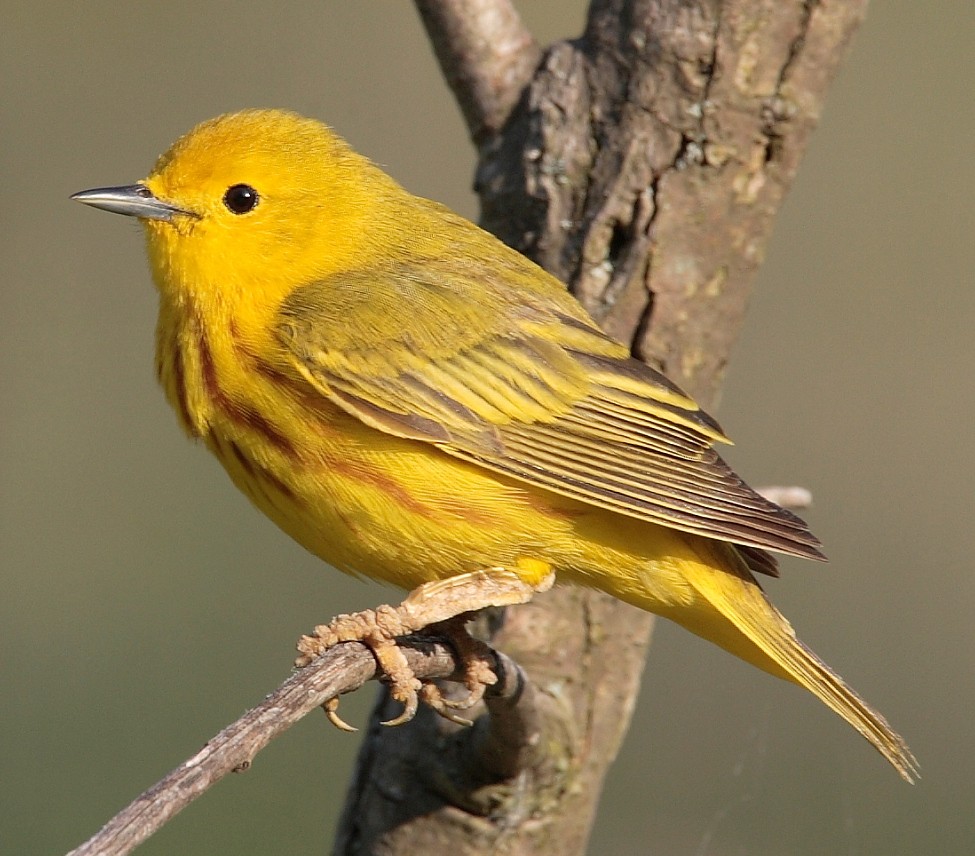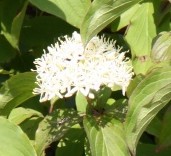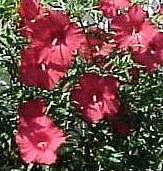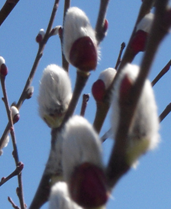 The warbler family is a large and diverse group, including over one hundred species spread out over North America, Central America, South American and the West Indies. Most prefer aboreal habitats but some are found in deserts, grassland, and swamps. About fifty species migrate through the United States or make their home here, most in the eastern half of the country, and the best time to see them is during the spring migration. Each species has very specific habitat demands so the likelihood of attracting warblers to your backyard is slim except during migration. Wood warblers, also called New World warblers, are small, and have thin legs and short pointy beaks that may be flat or slender. Many have bright colorful plumage but others are drab as are the females and juveniles. The majority of warblers eat insects with a few eating berries or sipping sap. Craneflies, mayflies, beetles, caterpillars and spiders are top choices.
The warbler family is a large and diverse group, including over one hundred species spread out over North America, Central America, South American and the West Indies. Most prefer aboreal habitats but some are found in deserts, grassland, and swamps. About fifty species migrate through the United States or make their home here, most in the eastern half of the country, and the best time to see them is during the spring migration. Each species has very specific habitat demands so the likelihood of attracting warblers to your backyard is slim except during migration. Wood warblers, also called New World warblers, are small, and have thin legs and short pointy beaks that may be flat or slender. Many have bright colorful plumage but others are drab as are the females and juveniles. The majority of warblers eat insects with a few eating berries or sipping sap. Craneflies, mayflies, beetles, caterpillars and spiders are top choices.
Plants that attract small insects are most likely to lure warblers to your garden especially during migration. Clusters of small flowers attract the most insects and so will be most attractive to warblers. The common yellow throat is the most likely warbler to come to and linger in a backyard, and plants are included to appeal specifically to it. Plant them in an out of the way place where you will not disturb the feathered visitors.
 Redtwig Dogwood (Cornus alba)
Redtwig Dogwood (Cornus alba) Clusters of white flowers are produced by this fast growing deciduous shrub in spring followed by white to bluish berries in fall. It makes an excellent hedge and spreads to form clumps. The insects at the flowers attract warblers while the berries are eaten by a few warblers, thrushes, and waxwings. Many birds enjoy the cover provided by redtwig dogwood, and sparrows may use it as a nesting site. Additional benefits for the gardener are attractive fall coloration and red stems in the winter.
Clusters of white flowers are produced by this fast growing deciduous shrub in spring followed by white to bluish berries in fall. It makes an excellent hedge and spreads to form clumps. The insects at the flowers attract warblers while the berries are eaten by a few warblers, thrushes, and waxwings. Many birds enjoy the cover provided by redtwig dogwood, and sparrows may use it as a nesting site. Additional benefits for the gardener are attractive fall coloration and red stems in the winter.
-
Size: 8′ H
Site: Full sun to part shade; consistantly moist, well-drained soil
Hardiness: Zones 3-7
 Hibiscus/ Rose Mallow (Hibiscus moscheutos)
Hibiscus/ Rose Mallow (Hibiscus moscheutos) Plant this deciduous shrubby perennial to attract the common yellowthroat who will appreciate the insects it attracts and the opportunity for nesting sites provided by its multitde of thick stems. The flowers huge, the size of salad plates, and come in white and shades of pink to red. ‘Lady Baltimore’ and ‘Lord Baltimore’ are particularly desirable cultivars and relatively easy to find. Vieos and orioles may come for the insects on the foliage.
Plant this deciduous shrubby perennial to attract the common yellowthroat who will appreciate the insects it attracts and the opportunity for nesting sites provided by its multitde of thick stems. The flowers huge, the size of salad plates, and come in white and shades of pink to red. ‘Lady Baltimore’ and ‘Lord Baltimore’ are particularly desirable cultivars and relatively easy to find. Vieos and orioles may come for the insects on the foliage.
-
Size: 5′ H
Site: Full sun; medium moist soil but can not be allowed to dry out
Hardiness: Zones 5-9
 Pussy Willow (Salix discolor)
Pussy Willow (Salix discolor) Pussy willow is a fast growing deciduous shrub or small tree. The silky, pearl gray male catkins are produced in spring and attract warblers, vireos, and orioles with the insects that come to the flowers. Warblers, as well as chickadees and titmice, collect fluff from the catkins for nest building and the yellow warbler may use the plant for nesting.
Pussy willow is a fast growing deciduous shrub or small tree. The silky, pearl gray male catkins are produced in spring and attract warblers, vireos, and orioles with the insects that come to the flowers. Warblers, as well as chickadees and titmice, collect fluff from the catkins for nest building and the yellow warbler may use the plant for nesting.
-
Size: 6-15′ H
Site: Full sun to part shade; medium to wet, well-drained soil
Hardiness: Zones 4-8
 Red Raspberry (Rubus idaeus)
Red Raspberry (Rubus idaeus) The plants are deciduous and have long, arching thorny canes that provide desirable cover for warblers. Everbearing cultivars like ‘Heritage’ produce berries in both in early summer and fall providing food for some warblers as well as thrushes, werens, orioles, and tanager. The insects at the flowers and on the foliage are attractive to many warblers.
The plants are deciduous and have long, arching thorny canes that provide desirable cover for warblers. Everbearing cultivars like ‘Heritage’ produce berries in both in early summer and fall providing food for some warblers as well as thrushes, werens, orioles, and tanager. The insects at the flowers and on the foliage are attractive to many warblers.
-
Size: To 6′
Site: Full sun; fertile, moist, well-drained, slightly acidic soil
Hardiness: Zones 3-8
 Goldenrod (Solidago spp. and cultivars)
Goldenrod (Solidago spp. and cultivars) This herbaceous perennial is native to the United States and is a familiar “weed” along roadsides but many fine goldenrod cultivars have been bred for the garden. Goldenrods bloom late in the season and can are especially attractive to the common yellowthroat that enjoys the insects on the foliage and around the flowers, as well as the cover and potential as a nesting site. Migratory flycatchers, vireos, and wrens also enjoy the insects and mountain bluebirds use the stems for building nests.
This herbaceous perennial is native to the United States and is a familiar “weed” along roadsides but many fine goldenrod cultivars have been bred for the garden. Goldenrods bloom late in the season and can are especially attractive to the common yellowthroat that enjoys the insects on the foliage and around the flowers, as well as the cover and potential as a nesting site. Migratory flycatchers, vireos, and wrens also enjoy the insects and mountain bluebirds use the stems for building nests.
-
Size: 3-5′ depending on variety
Site:Full sun, medium moist to dry, well-drained
Hardiness: Zones 2-8 depending on variety

Photo of warbler from Wikipedia